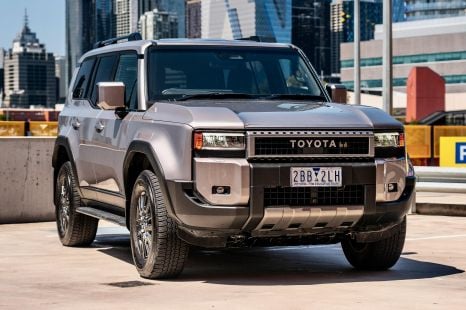

Max Davies
2025 Toyota Prado GXL review
3 Months Ago
If you want a seven-seat LandCruiser, the Sahara is still the fanciest – and it packs more kit than even a seven-seat Lexus LX.
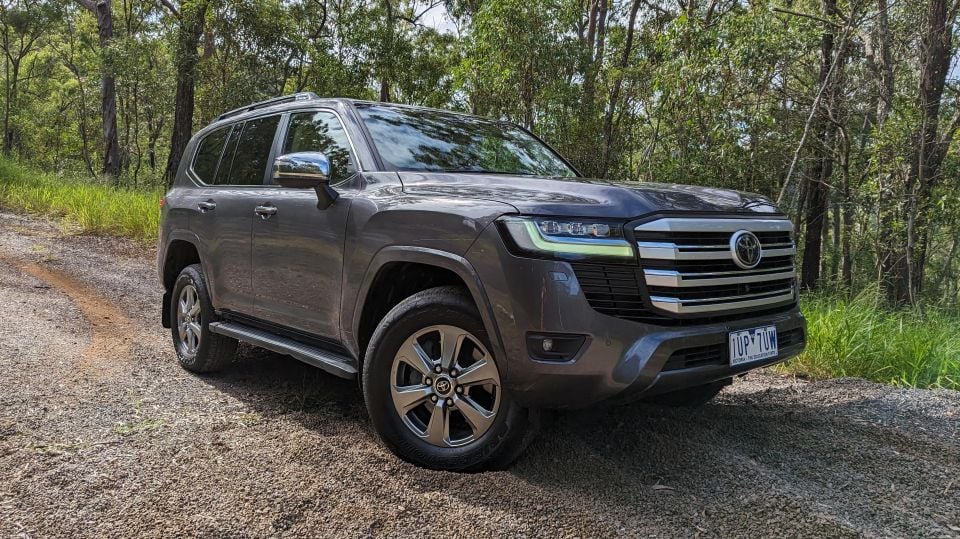
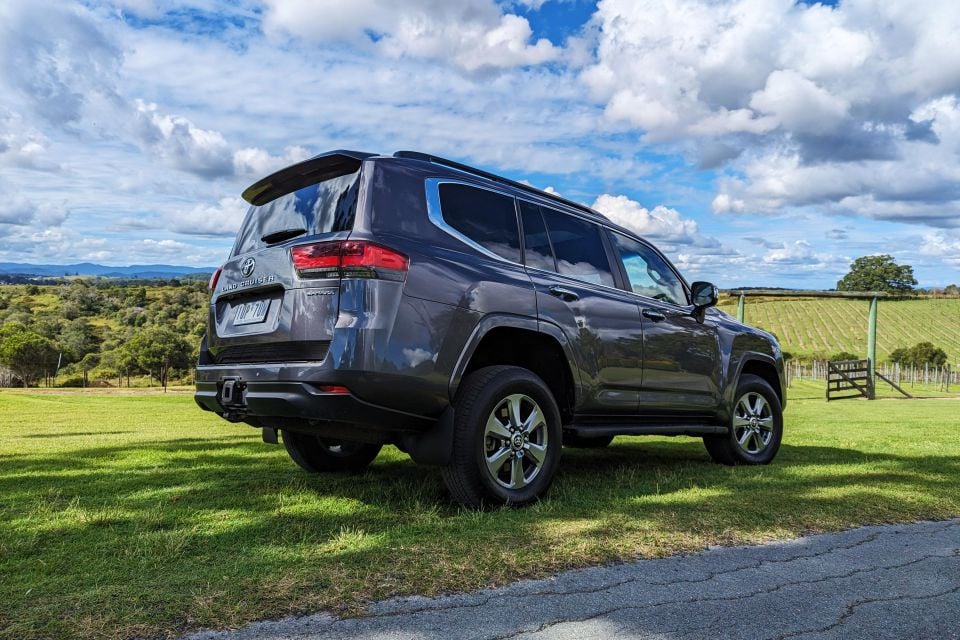

Quickly see how this car stacks up against its competition. Select any benchmark to see more details.
Where expert car reviews meet expert car buying – CarExpert gives you trusted advice, personalised service and real savings on your next new car.
It wasn’t that long ago that if you got a Toyota LandCruiser Sahara, you were getting the top-dog SUV from the Japanese brand.

Then, things changed with the 300 Series of 2021. The Sahara got shuffled down, to the point where there are actually two LandCruiser grades sitting above it in price.
Those variants, the GR Sport and Sahara ZX, are only available with five seats so the Sahara does at least have the title of fanciest seven-seat LandCruiser (though as has been the case for decades, there’s the LandCruiser’s fancy LX cousin from Lexus).
The LandCruiser 300 Series may have only launched in 2021 but its evolutionary styling means it’s already looking a bit old.
The Sahara’s 18-inch alloy wheels also aren’t anything flash, though its footwear is better-suited for off-roading than the chrome-finished 20s and lower-profile rubber of the Sahara ZX.
WATCH: Paul’s video review of the 2022 Toyota LandCruiser VX
Inside, the LandCruiser is also still running Toyota’s old-infotainment multimedia system, despite models like the cheaper Corolla moving to the brand’s latest generation of in-car tech. Reports out of Japan earlier this year suggested such an update is around the corner.
Still, it’s not as though the 300 Series has become a fossil in the space of just three years. There’s little out there that can approach its combination of dependability and off-road and towing capability.
It arguably has just one direct rival in the Nissan Patrol, a much older beast that, while cheaper, packs a thirstier petrol V8 under the bonnet. Deliveries of the next-generation Y63 model also won’t begin here until 2027.
The Sahara we tested was certainly one of the higher-mileage press cars we’ve driven. In fact, it appears we drove this very vehicle all the way back in 2022!
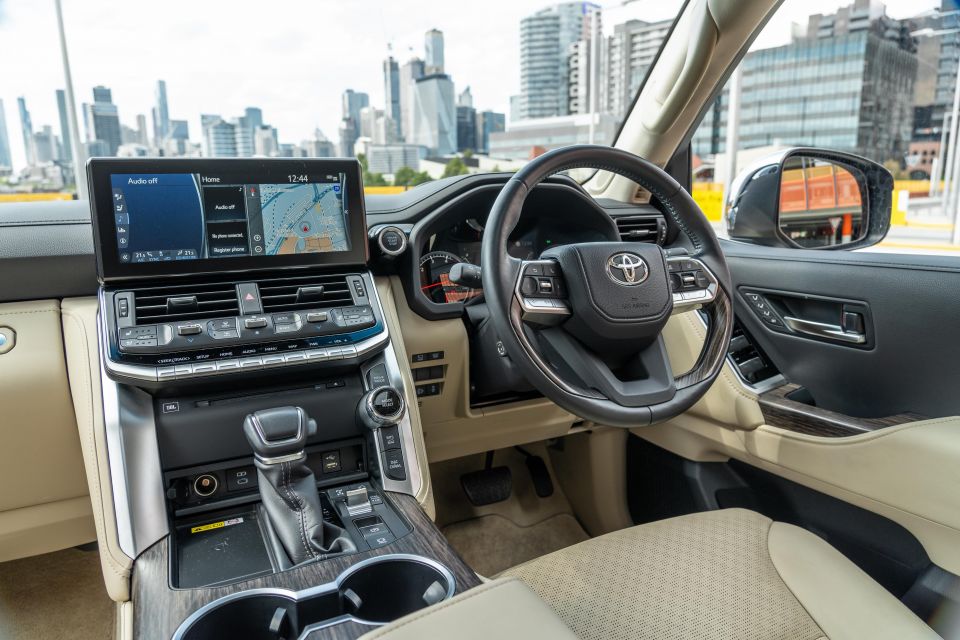
Still, it’s representative of what you can buy new in Toyota Australia showrooms… though the one you’ll take delivery of will probably have much lower mileage!
On test here is the Sahara which sits underneath the off-road-focused GR Sport and luxurious Sahara ZX.
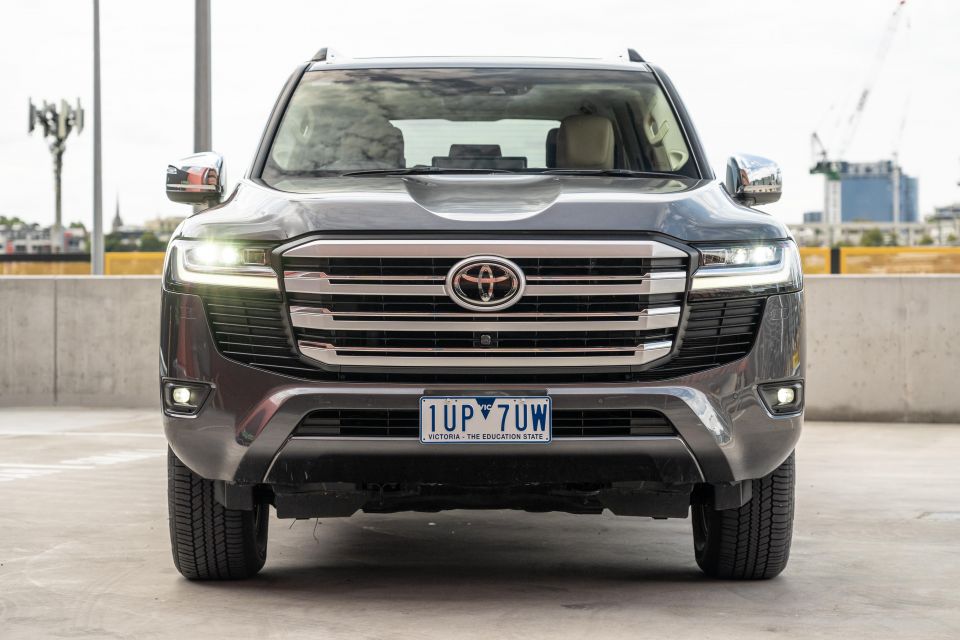
| Model | Price before on-road costs |
|---|---|
| 2025 Toyota LandCruiser 300 Series GX | $96,991 |
| 2025 Toyota LandCruiser 300 Series GXL | $108,791 |
| 2025 Toyota LandCruiser 300 Series VX | $120,991 |
| 2025 Toyota LandCruiser 300 Series Sahara | $138,191 |
| 2025 Toyota LandCruiser 300 Series GR Sport | $144,791 |
| 2025 Toyota LandCruiser 300 Series Sahara ZX | $145,791 |
To see how the LandCruiser compares with its rivals, use our comparison tool.
Buy your new car without the stress. It's fast, simple and completely free.

Great service from Travis and team, second time I have used this business would not hesitate to recommend them to anyone
Craig C.
Purchased a Ford Ranger in Sunshine Coast, QLD
CarExpert helped Craig save $7,224 on his Ford Ranger, now let us save you on your next new car.
Get your BEST priceI love a beige interior – my own car has one – but just what was Toyota thinking with this sea of beige?
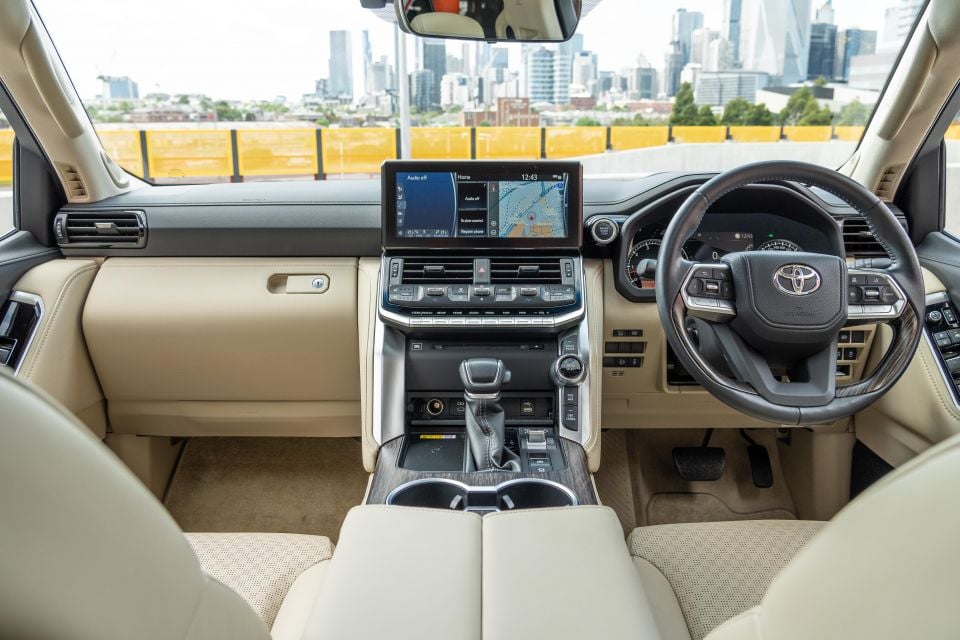
Like my car, the top half of the dashboard and doors is grey, providing some contrast. But instead of black carpeting for the floor, there’s beige. You know, on the bit of the car you’ll put your muddy boots. There’s even beige carpeting in the boot.
I’ve not seen flooring this impractical in a new car since the white carpets of the Mercedes-Benz EQE. You can solve this by getting some dark floor mats, or just simply by buying the Sahara with its other (black) interior colourway.
I’m loath to criticise a car company for offering a colourful interior, but this one is just a bridge too far.
The interior is classic Toyota, for better or worse. The smell of the plastics reminds me of my dad’s HiLux work ute from when I was a kid, and there are lots of large-print buttons. There’s still an honest-to-goodness CD player in the centre stack, while the dual second-row screens can play DVDs and the sunroof is only a single-pane unit.
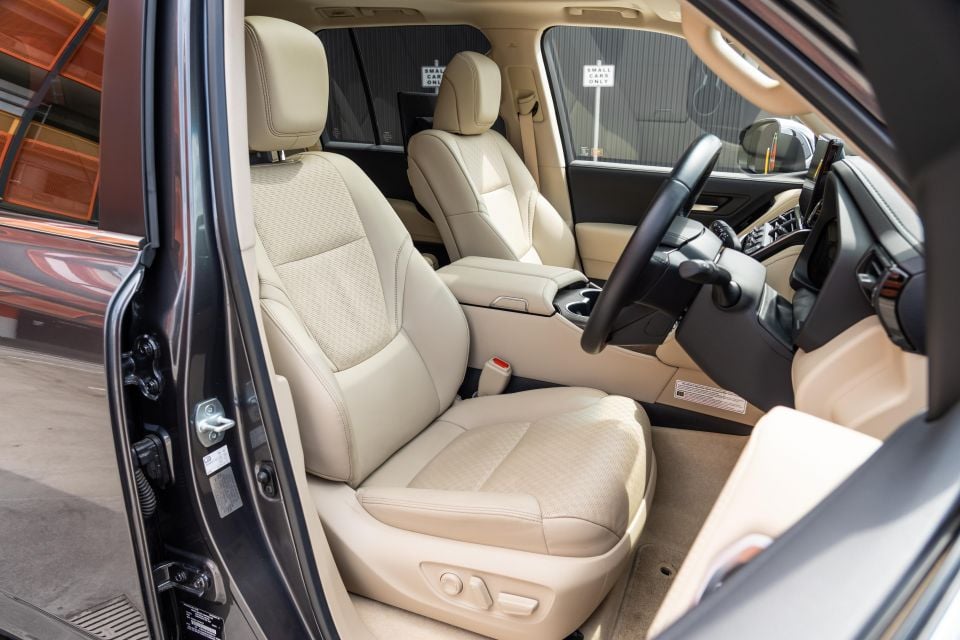
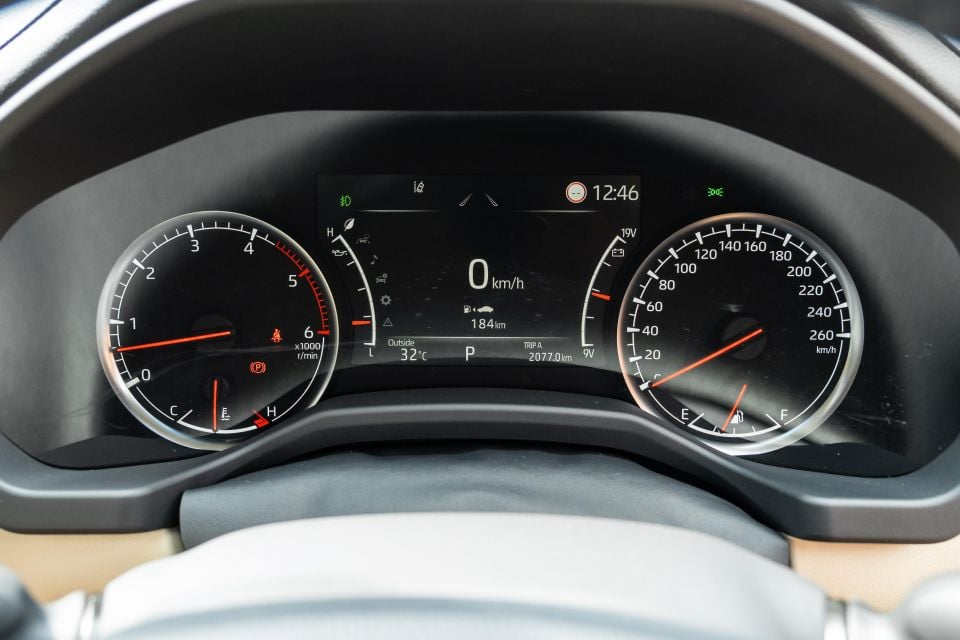
The infotainment system hasn’t been updated to the latest generation, so its washed-out blue graphics are looking tired. Still, there’s (wired) Apple CarPlay and Android Auto, embedded satellite navigation, surround-view camera displays with average resolution, and adequate response times.
There are also both USB-A and USB-C outlets, as well as a wireless phone charger. You’ll need to use the USB-A port for smartphone mirroring, however.
There are shortcut buttons for the infotainment, while there’s also an anchored menu that can flip from either side of the screen and allows you to navigate between different functions like the climate control settings, but stops the smartphone mirroring from taking up the whole screen.
There are additional physical controls for climate settings, and they’re extremely easy to reach. All those big buttons might not necessarily be trendy in 2024, but usability in the Sahara is excellent.

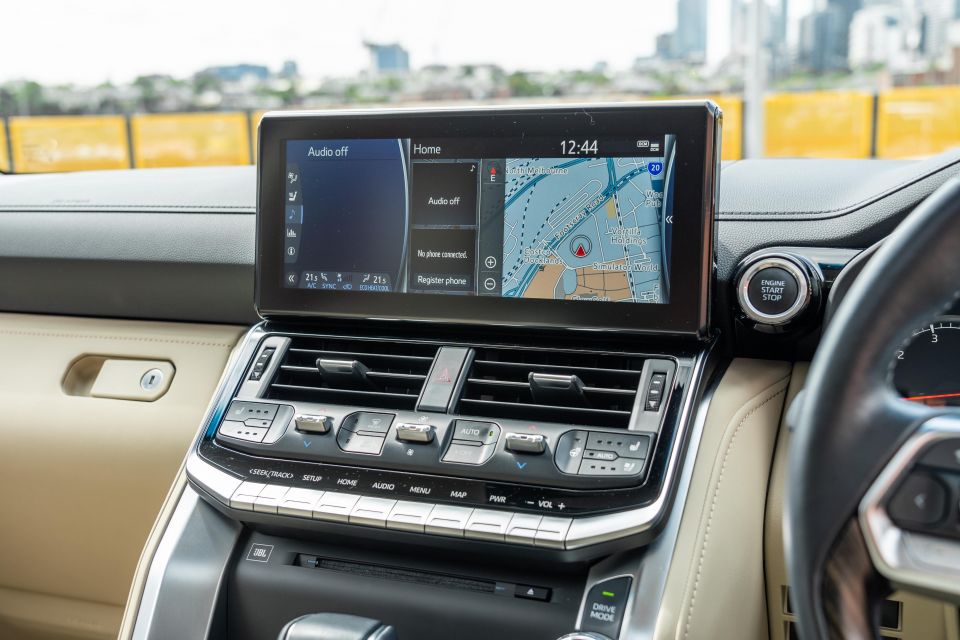
While some of the Sahara’s interior details are almost retro, the overall ambience is entirely pleasant.
Almost every surface is covered in soft-touch trim with stitching details. You’ll have to go searching for the hard stuff, which you’ll find in small sections of the dash and on the lower reaches of the doors.
Leatherette trim can be found on the sides of the centre console and the centre stack, so your knee has something comfortable to rest against, while the dash top has the appearance of being leather-wrapped.
The wood trim has an interesting texture to it, and it’s not the most realistic-looking fake tree out there. Toyota has done much tackier woodgrain trim before, though.
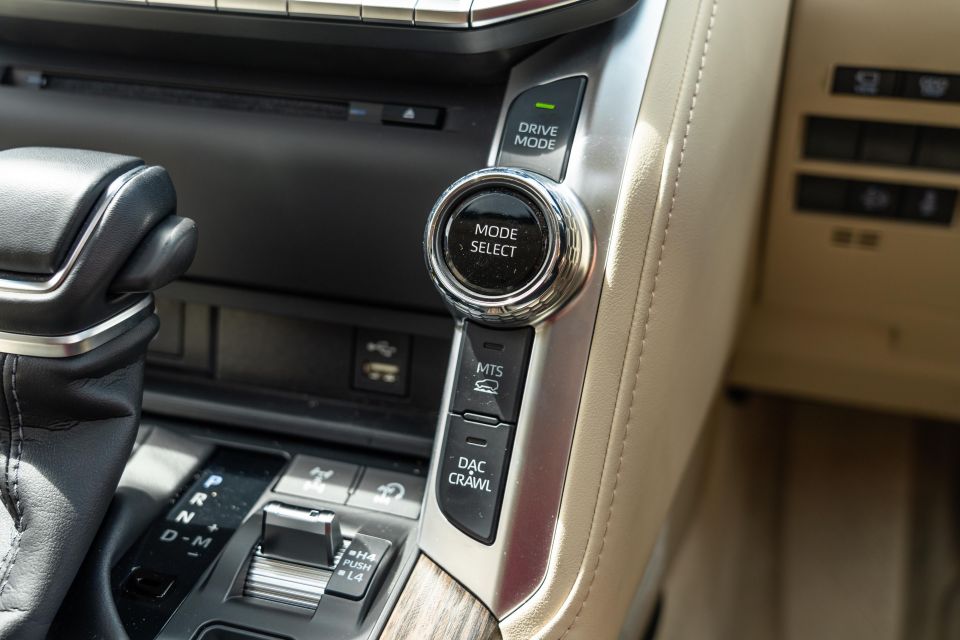
Gloss-black trim is kept to a minimum in the cabin, with much more in the way of metallic trim used on the centre stack and the dark, smudge-prone stuff limited to some small parts of the interior like around the window switches.
Ahead of the driver is an instrument cluster that combines a pair of simple, elegant analogue gauges and a 7.0-inch digital screen. The overall effect prioritises function over form, and it’s not as modern as the full digital instrument clusters in some similarly priced SUVs.
We have no such gripe about the head-up display, which is neat and well-detailed.
The steering wheel has Toyota’s rather plasticky leather wrapping, but we appreciate that the wood inlays are on the inside of the rim instead of on the outside, where such trim often makes a wheel harder to grip.
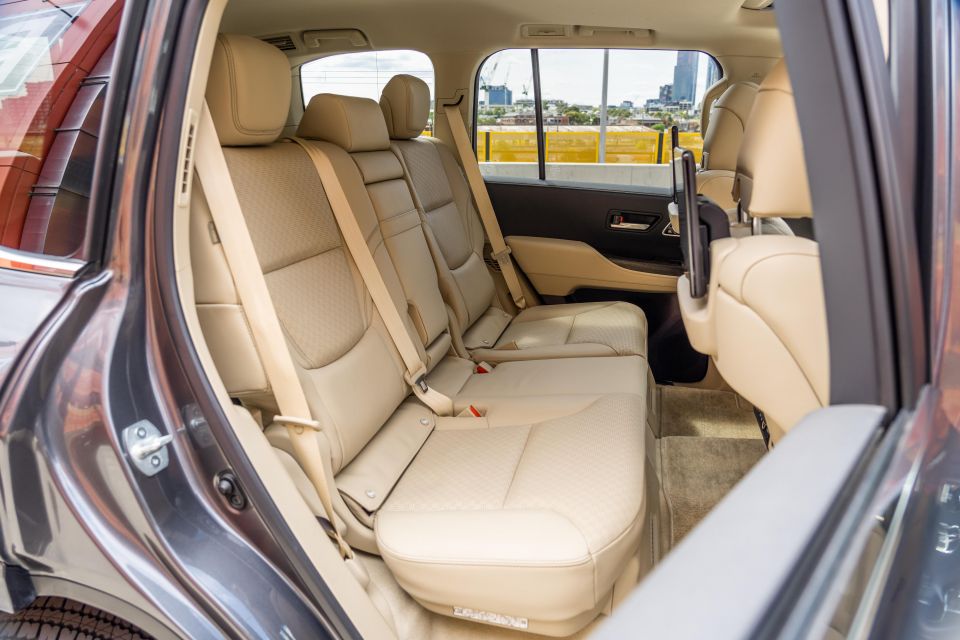
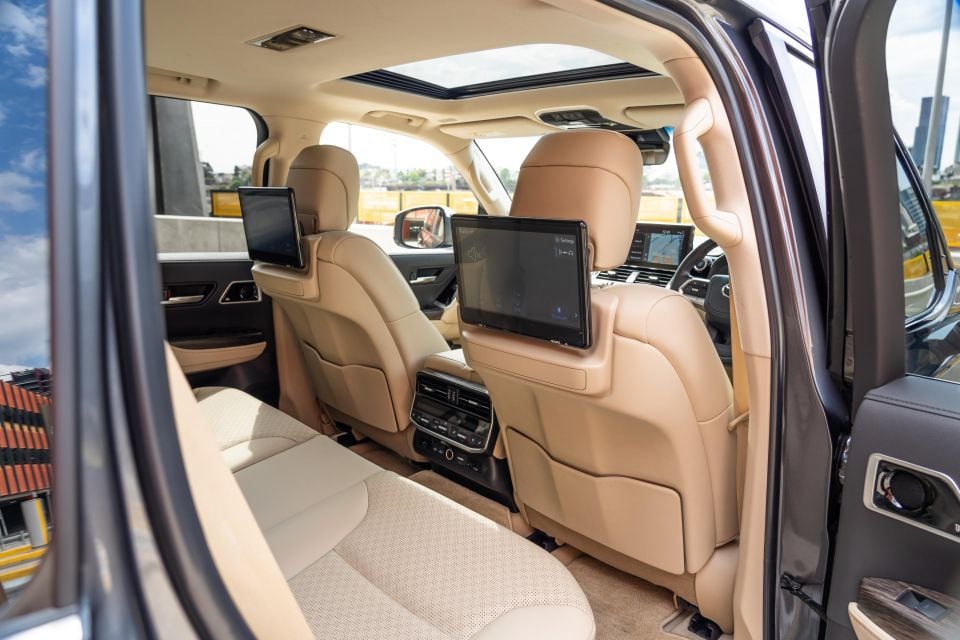
The centre console features a cool box, perfect for keeping drinks chilled. The lid opens from either side of the cabin.
The front seats are comfortable, and feature both heating and ventilation.
The outboard second-row seats also feature heating and ventilation, while at the rear of the centre console you’ll find air vents (to complement the floor-level ones), climate controls, a pair of USB-C outlets, headphone jacks for each of the entertainment screens, and an HDMI input.
There’s quite a wide driveline hump ahead of these, limiting legroom for the centre-seat occupant. Otherwise, the second-row accommodations are comfortable.
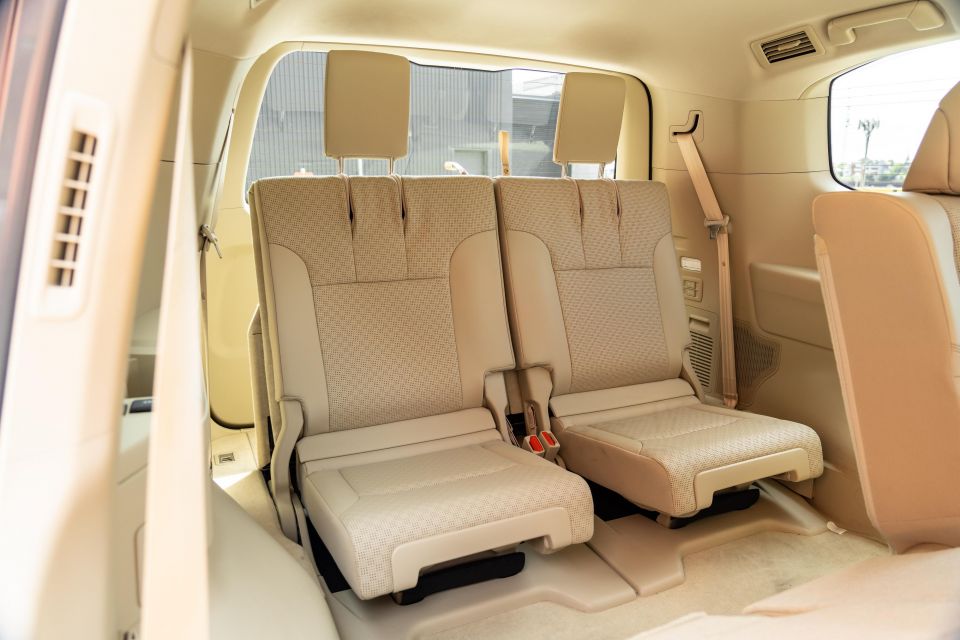
The second-row seats tumble forward instead of sliding, though it’s still a bit awkward clambering into the third row. You can also remotely release the second-row seats from the rear of the cabin.
The third row is power-folding, and back here you’ll find air vents plus a USB-C outlet on either side.
I’m 180cm tall, and I found I had enough legroom back here even though the second row doesn’t slide to free up more space. My head, however, was just touching the roof.
With all three rows up, there’s only 175L of boot space, so you’ll struggle to fit more than, say, a few light duffle bags. However, the third row folds flat into the floor, and you can also drop the second row from back here.
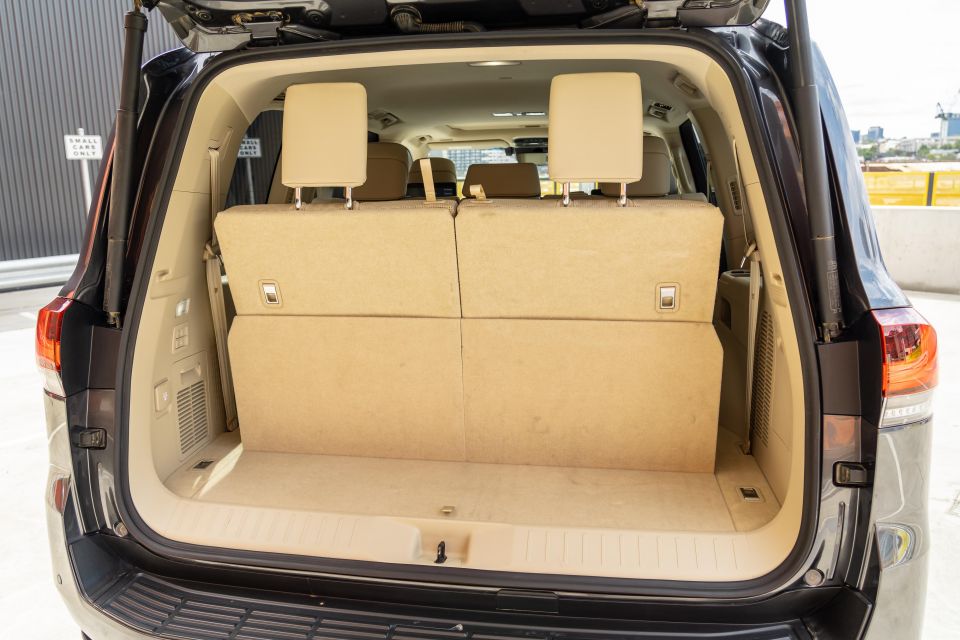
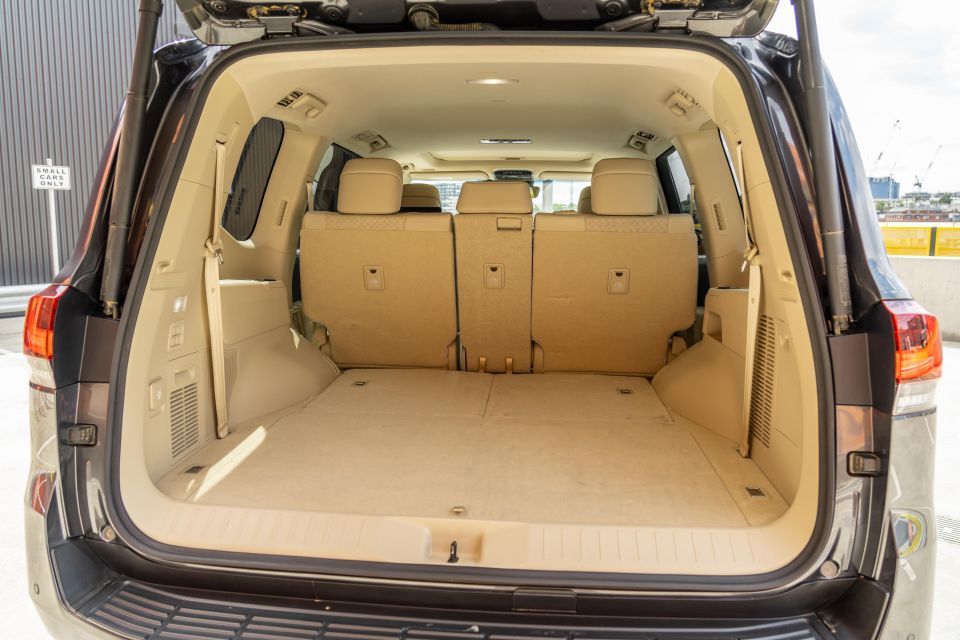
| Specifications | Toyota LandCruiser 300 Series |
|---|---|
| Length | 5015mm (Sahara ZX) 4995mm (GR Sport) 4980mm (all other models) |
| Width | 2000mm (GX) 1990mm (GR Sport) 1980mm (all other models) |
| Height | 1950mm |
| Wheelbase | 2850mm |
| Cargo capacity (seven-seat models) | 175L (all seats up) 1004L (3rd row folded) 1967L (3rd and 2nd rows folded) |
To see how the LandCruiser compares with its rivals, use our comparison tool.
The only powertrain available locally is a 3.3-litre twin-turbo V6 diesel.
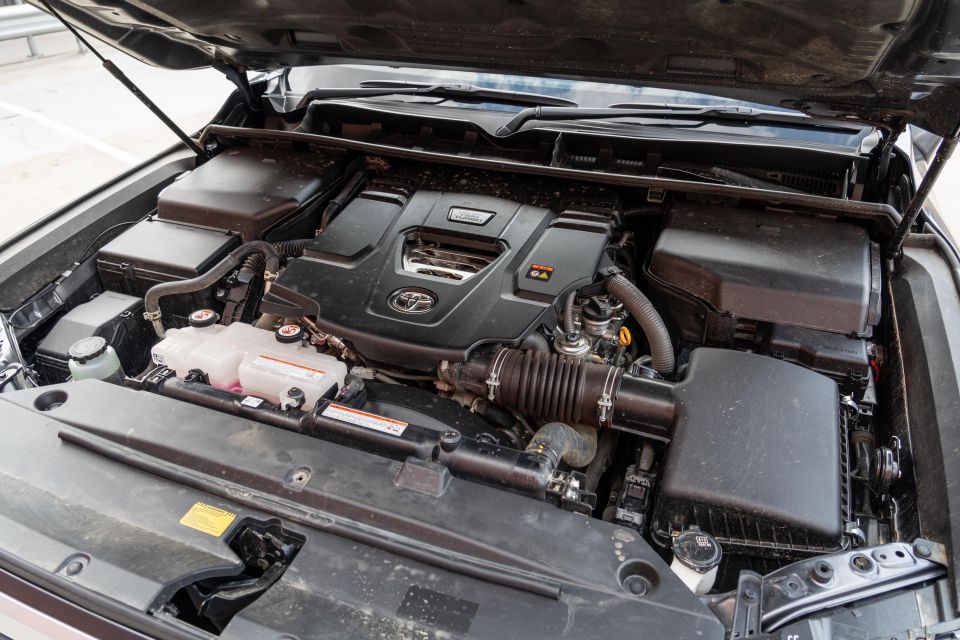
| Specifications | Toyota LandCruiser 300 Series |
|---|---|
| Engine | 3.3L twin-turbo V6 diesel |
| Power | 227kW @ 4000Nm |
| Torque | 700Nm @ 1600-2600rpm |
| Transmission | 10-speed auto |
| Drive type | Four-wheel drive |
| Weight | 2495kg-2630kg |
| Fuel economy (claimed) | 8.9L/100km |
| Fuel economy (observed) | 10.7L/100km (inner-city, suburban and highway loop) 13.5L/100km (over the course of a week) |
| Fuel tank capacity | 80L (main tank) 30L (sub-tank) |
| Braked towing capacity | 3500kg |
| Unbraked towing capacity | 750kg |
| Kerb weight | 2630kg |
| Gross vehicle mass (GVM) | 3280kg |
To see how the LandCruiser compares with its rivals, use our comparison tool.
Fire up the LandCruiser and you’ll find the turbo-diesel V6 has a purposeful, beefy engine note. No, it’s not as lovely to listen to as the old turbo-diesel V8, but it sounds a hell of a lot better than a four-cylinder Prado.
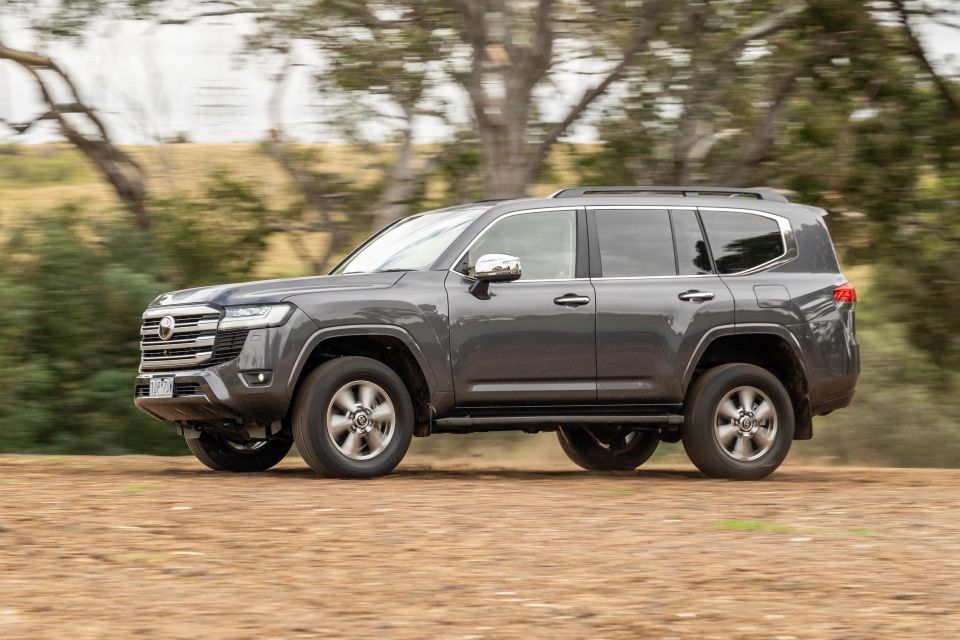
Engine noise is well-suppressed overall. At highway speeds the engine just fades away into the background, sitting at 1500rpm, and all you can hear the faint whistle of the wind. It’s very easy to hold a conversation in this car at high speeds.
You peer down a long, upright bonnet with what appears to be the Panama Canal running down the middle of it.
While this is a big SUV, it doesn’t feel too cumbersome to drive. The power steering is nicely weighted, making it easy to manoueuvre around carparks, but without feeling as feather-light and loose as the Patrol’s system. It has a nice, linear feel to it.
Don’t go thinking this is some German luxury crossover. Push it into a corner and you’ll hear the tyres howl and feel the body lean, but I’d like to see a BMW X7 go as far off the beaten track as this.

Where expert car reviews meet expert car buying – CarExpert gives you trusted advice, personalised service and real savings on your next new car.
There’s occasionally a shunt felt when creeping through traffic at low speeds or while slowing down. However, the 10-speed automatic otherwise shifts smoothly and imperceptibly; you never seem to notice it hunting around for gears, despite having so many to choose from.
There’s effortless thrust from the LandCruiser, with peak torque available available from as low as 1600rpm.
It’s called a LandCruiser, and by gosh it cruises. This is about as comfortable as a body-on-frame vehicle can get.
Its construction is betrayed by the slight movements you can feel in the chassis when, for example, you go over successive bumps, or when you’re on a road that isn’t perfectly smooth; a unibody vehicle will typically feel tighter.
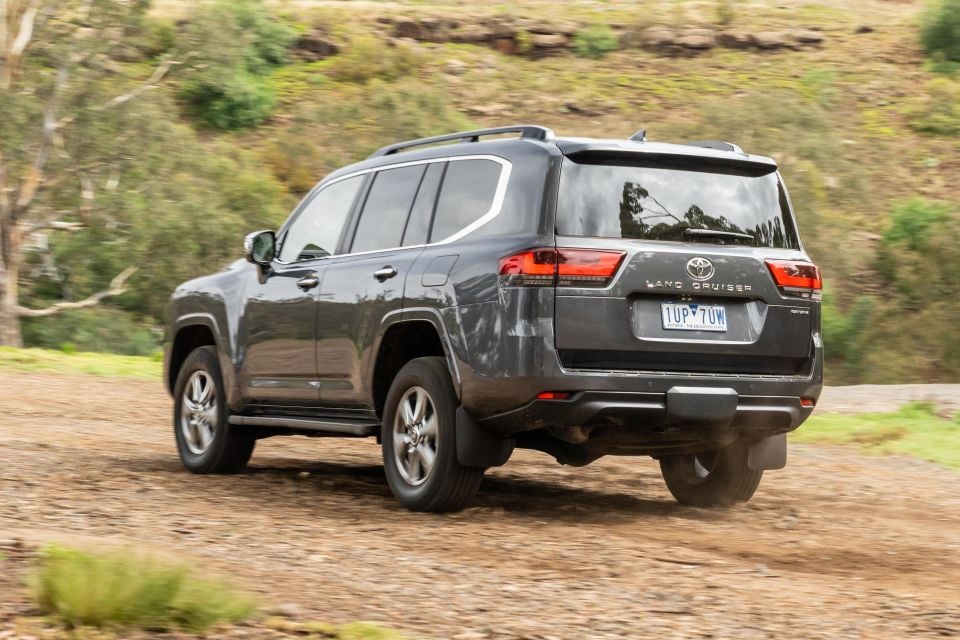
Nevertheless, this boasts an extremely comfortable ride, and it never crashes over bumps. It also manages to iron out rubbish roads without bobbing incessantly, with a commendable level of body control.
Country roads and highways are lapped up by the LandCruiser, but there are a couple of things stopping this from being the ideal road trip vehicle.
The brake-based lane assistance system nudges you back in your lane, but on winding country roads it’s too assertive and can startle you.
Toyota’s lane centring system, called Lane Trace Assist, is also too twitchy and jerky. It’s a shame as the adaptive cruise control works well with the traffic sign recognition, making highway driving even easier, but then the lane ‘smarts’ prove flawed.
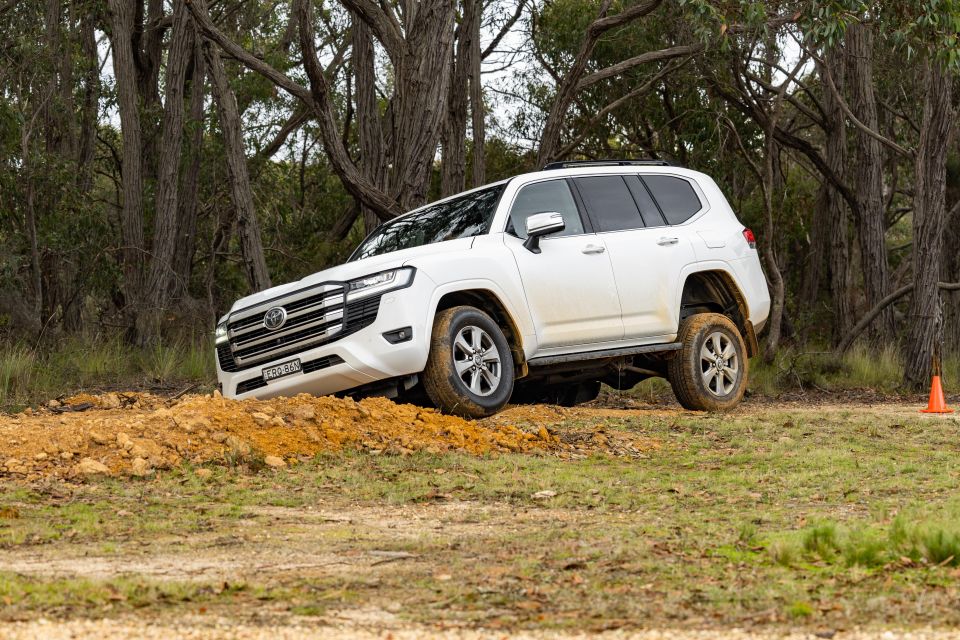
That said, the cruise control may be easy to set, but it did struggle to keep the car to its set speed.
The Sahara is a comfortable cruiser on bitumen, and it also proves sure-footed when tackling light off-road trails.
In addition to a full-time four-wheel drive system with selectable low-range gearing, there are selectable terrain modes, a locking centre differential, crawl control and hill descent control.
If you want locking front and rear differentials, you’ll need to step up to the GR Sport, which also brings Toyota’s Electronic-Kinetic Dynamic Suspension System. Alternatively, you can go to the Sahara ZX, which instead adds over the Sahara a rear torque-sensing limited-slip differential.

While I didn’t press the Sahara into any tougher off-road duties than simple trails, or use it to tow, we tested one in our Best 4WD SUV competition in 2023.
On our off-road course, we found the LandCruiser to have impressive wheel articulation and an intelligent four-wheel drive system, while it towed confidently thanks in part to its well-calibrated automatic transmission.
You can read more about how it performed here.
Most of my driving was around town, and it felt like I had a shed full of tools but no DIY to do. That said, the LandCruiser is entirely livable in the urban grind, so the capability it boasts off road doesn’t make it any less pleasant on road.
There are six members of the LandCruiser 300 Series lineup. The GX, Sahara ZX and GR Sport have a five-seat layout, while the GXL, VX and Sahara have a seven-seat layout.


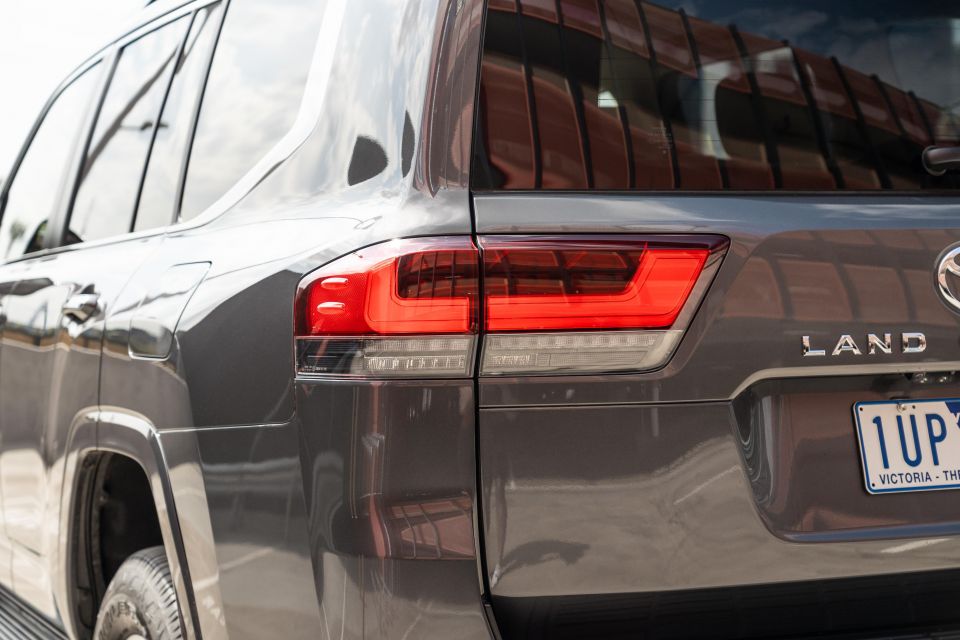

2025 Toyota LandCruiser 300 Series GX highlights:
GXL adds:
VX adds:
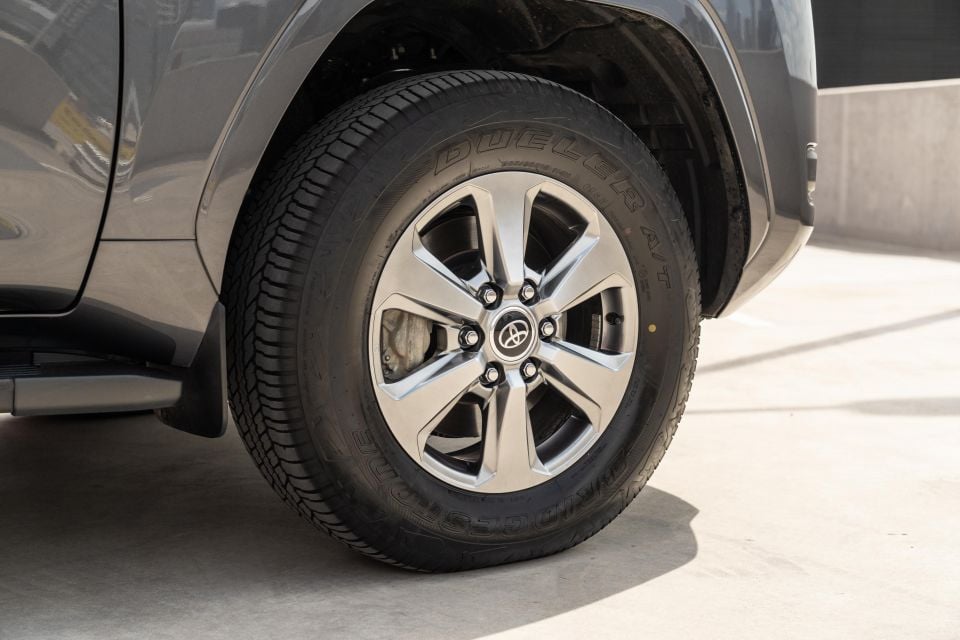

Sahara adds:
All new LC300 vehicles come with three years’ complimentary access to Toyota Connected Services, which includes stolen vehicle tracking, an SOS emergency call function, and automatic collision notification.
You can also access information and control features remotely via the myToyota Connect app.
The Toyota LandCruiser 300 Series has a five-star rating from independent safety authority ANCAP, based on testing conducted in 2022. This doesn’t apply to the GR Sport.
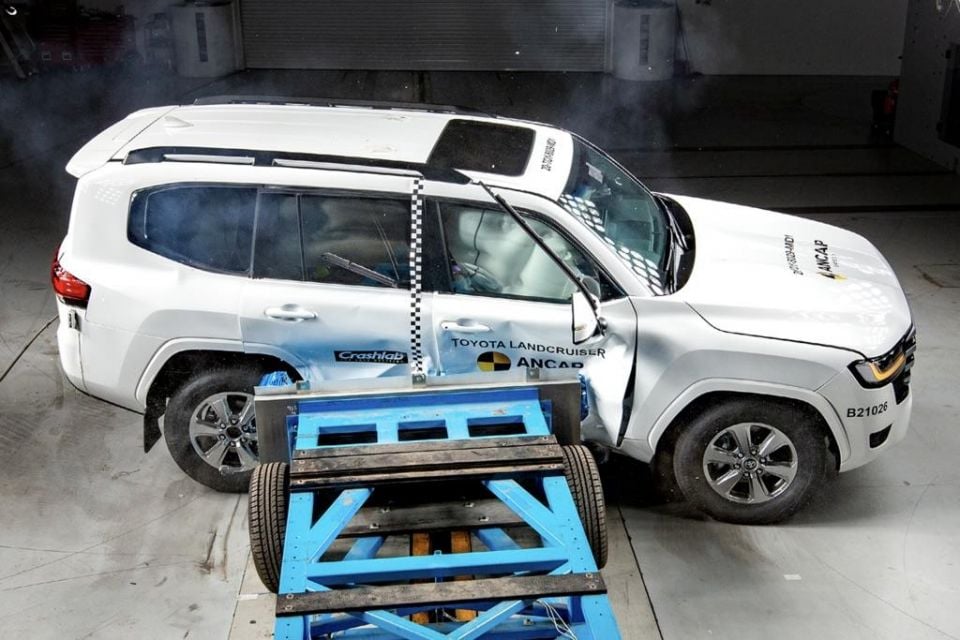
| Category | Toyota LandCruiser 300 Series |
|---|---|
| Adult occupant protection | 34.08 out of 38 (89 per cent) |
| Child occupant protection | 43.60 out of 49 (88 per cent) |
| Vulnerable road user protection | 44.02 out of 54 (81 per cent) |
| Safety assist | 12.40 out of 16 (77 per cent) |
Standard safety equipment includes:
While Toyota has some of the cheapest service pricing in the industry, the LandCruiser 300 Series – like many of Toyota’s four-wheel drive products – has short six-month, 10,000km servicing intervals.
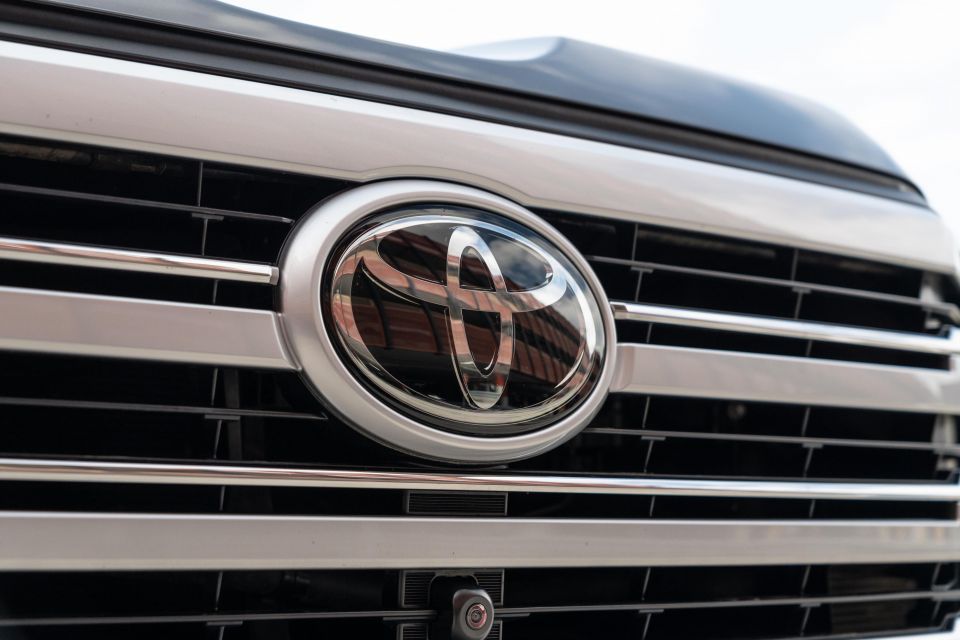
| Toyota LandCruiser 300 Series | |
|---|---|
| Warranty | Five-year, unlimited-kilometre |
| Service intervals | 6 months or 10,000km |
| Capped-price servicing | 5 years or 60,000km |
| Total capped-price service cost | $400 each |
To see how the LandCruiser compares with its rivals, use our comparison tool.
Buy your new car without the stress. It's fast, simple and completely free.

Great service from Travis and team, second time I have used this business would not hesitate to recommend them to anyone
Craig C.
Purchased a Ford Ranger in Sunshine Coast, QLD
CarExpert helped Craig save $7,224 on his Ford Ranger, now let us save you on your next new car.
Get your BEST priceThe Sahara mightn’t be the fanciest LandCruiser anymore, but it’s still the most luxurious seven-seat LandCruiser and among the most capable seven-seat SUVs on the market.
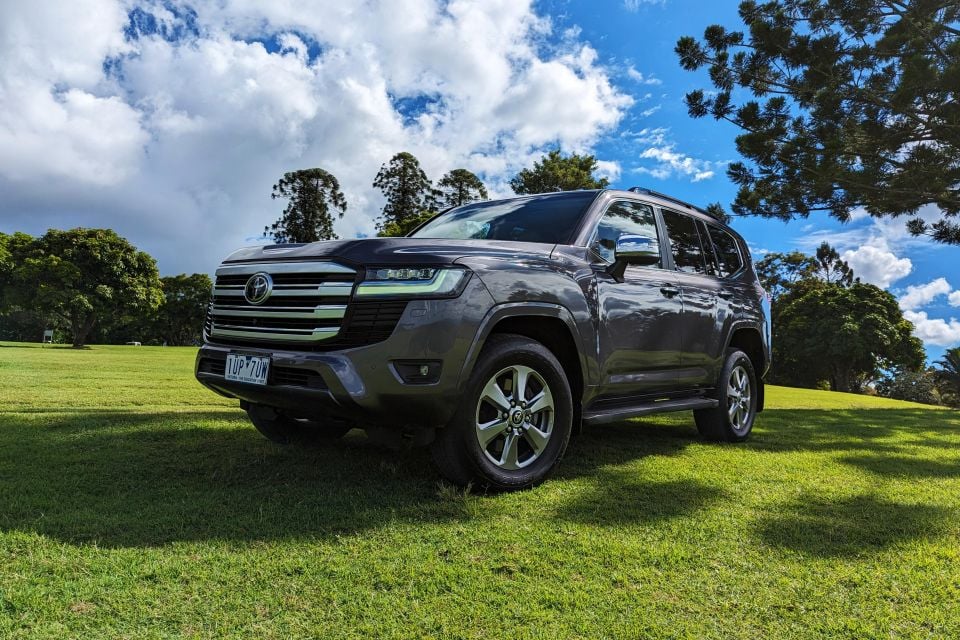
If you prioritise luxury above all else, a similarly priced Audi Q7 is probably a more desirable option, and it can tow as much too. But it doesn’t approach the LandCruiser’s level of off-road capability, nor can any of the German luxury brands match Toyota’s extensive dealer network or its entrenched reputation for dependability.
The LandCruiser Sahara still has a long list of equipment to keep it in contention with luxury-brand rivals. And, in fact, even if you were to step up to its posher, pricier Lexus LX cousin, you’d actually be missing out on various luxury features like ventilated front seats as these are restricted to five-seat members of that lineup.
The 300 Series interior might look a bit retro in parts, but material quality is quite good, and the third row is quite hospitable.
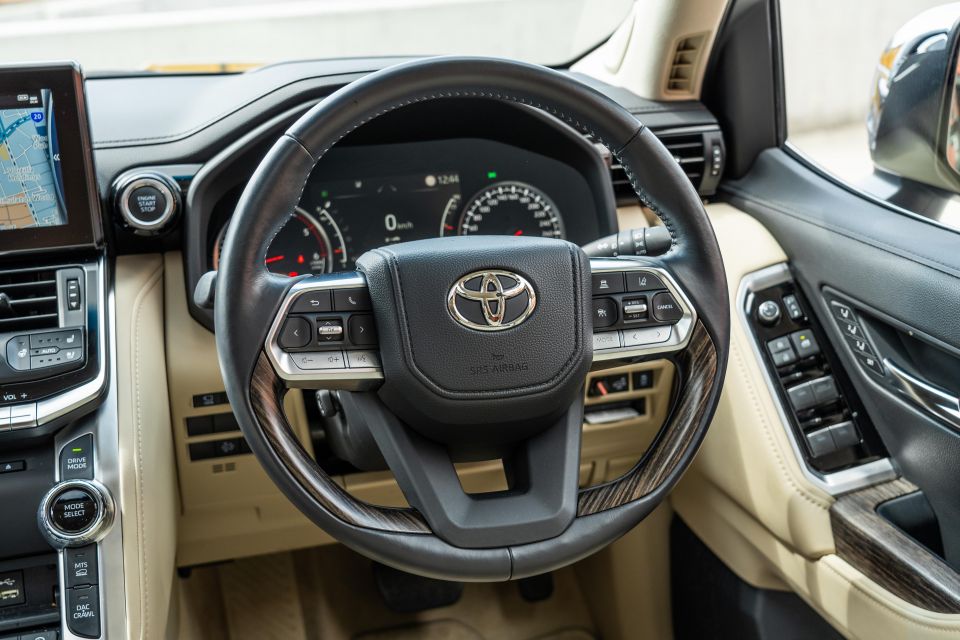
Still, for $18,000 less, the VX looks like stronger value. Sure, you swap leather upholstery for leatherette and miss out on a head-up display and power tailgate – admittedly features that should be standard in a $121k LandCruiser – but you still get plenty of standard kit and the same terrific powertrain and four-wheel drive system.
Then there’s the Nissan Patrol. It’s older than the hills and gulps down more fuel, but even in its most luxurious Ti-L trim it’s around $37,000 cheaper. That saving will pay for plenty of refuelling…
The LandCruiser Sahara is a terrific bit of kit, there’s no doubt about that. It’s comfortable and easy to drive, capable off-road, and has plenty of grunt, while its interior is surprisingly luxurious. It’s not cheap, though.
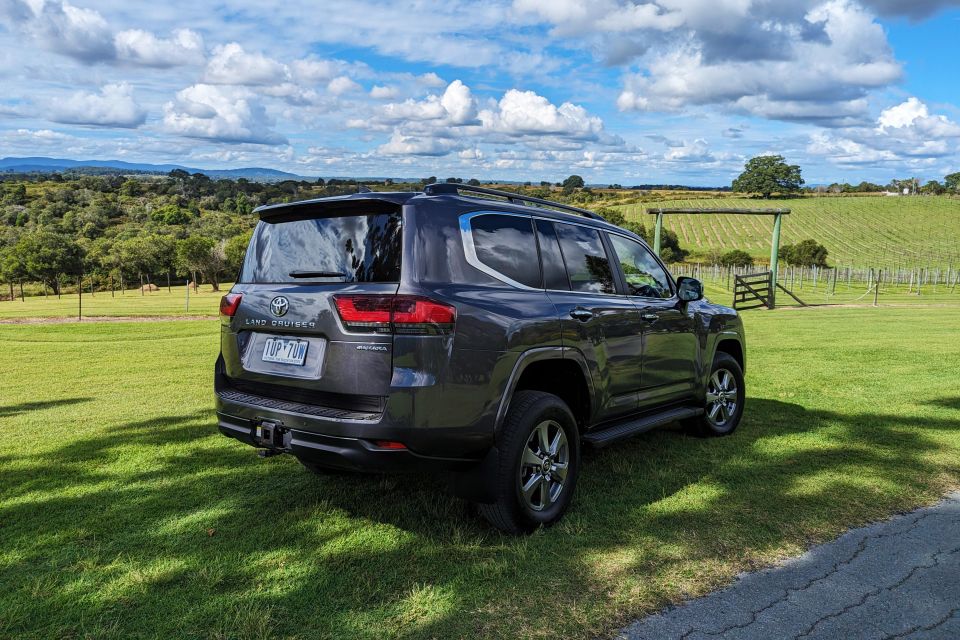
Interested in buying a Toyota LandCruiser? Get in touch with one of CarExpert’s trusted dealers here
Click the images for the full gallery
Where expert car reviews meet expert car buying – CarExpert gives you trusted advice, personalised service and real savings on your next new car.
William Stopford is an automotive journalist based in Brisbane, Australia. William is a Business/Journalism graduate from the Queensland University of Technology who loves to travel, briefly lived in the US, and has a particular interest in the American car industry.


Max Davies
3 Months Ago


Matt Campbell
2 Months Ago
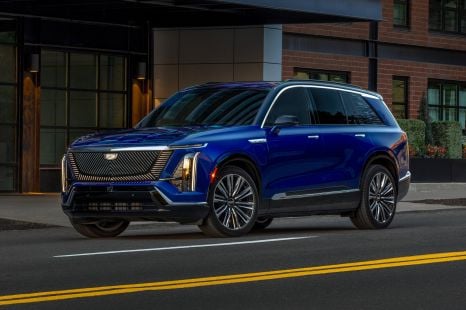

William Stopford
2 Months Ago
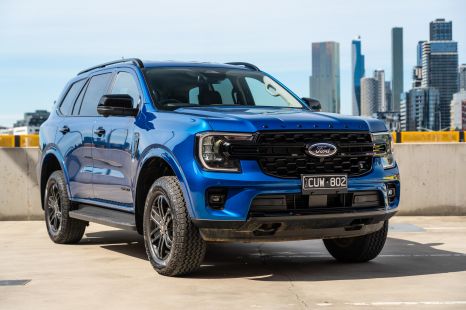

Josh Nevett
2 Months Ago


Max Davies
1 Month Ago
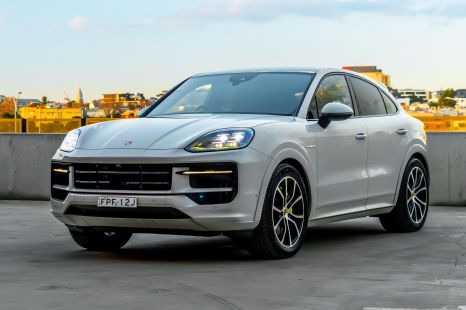

James Wong
26 Days Ago